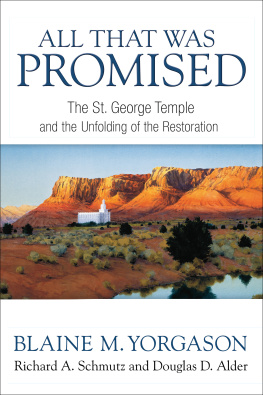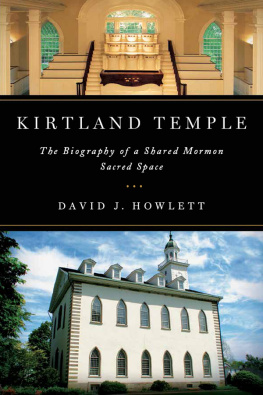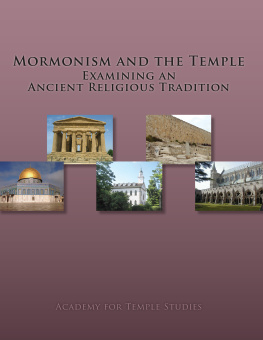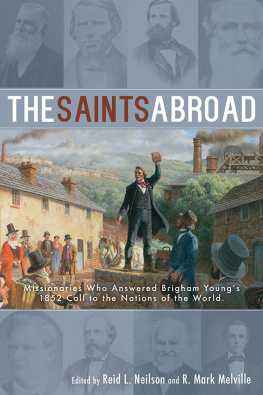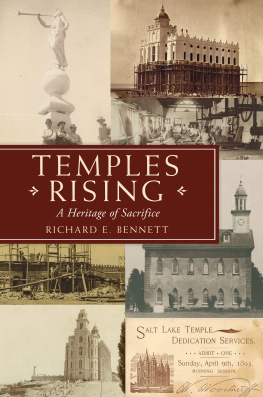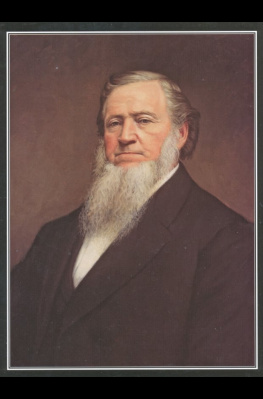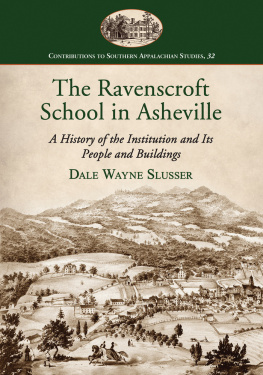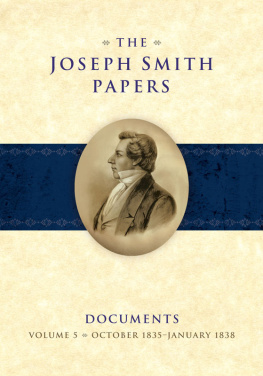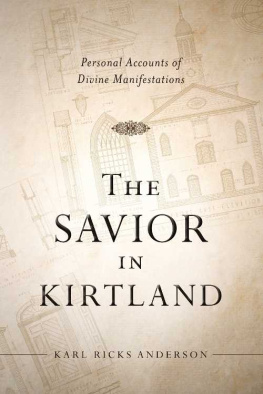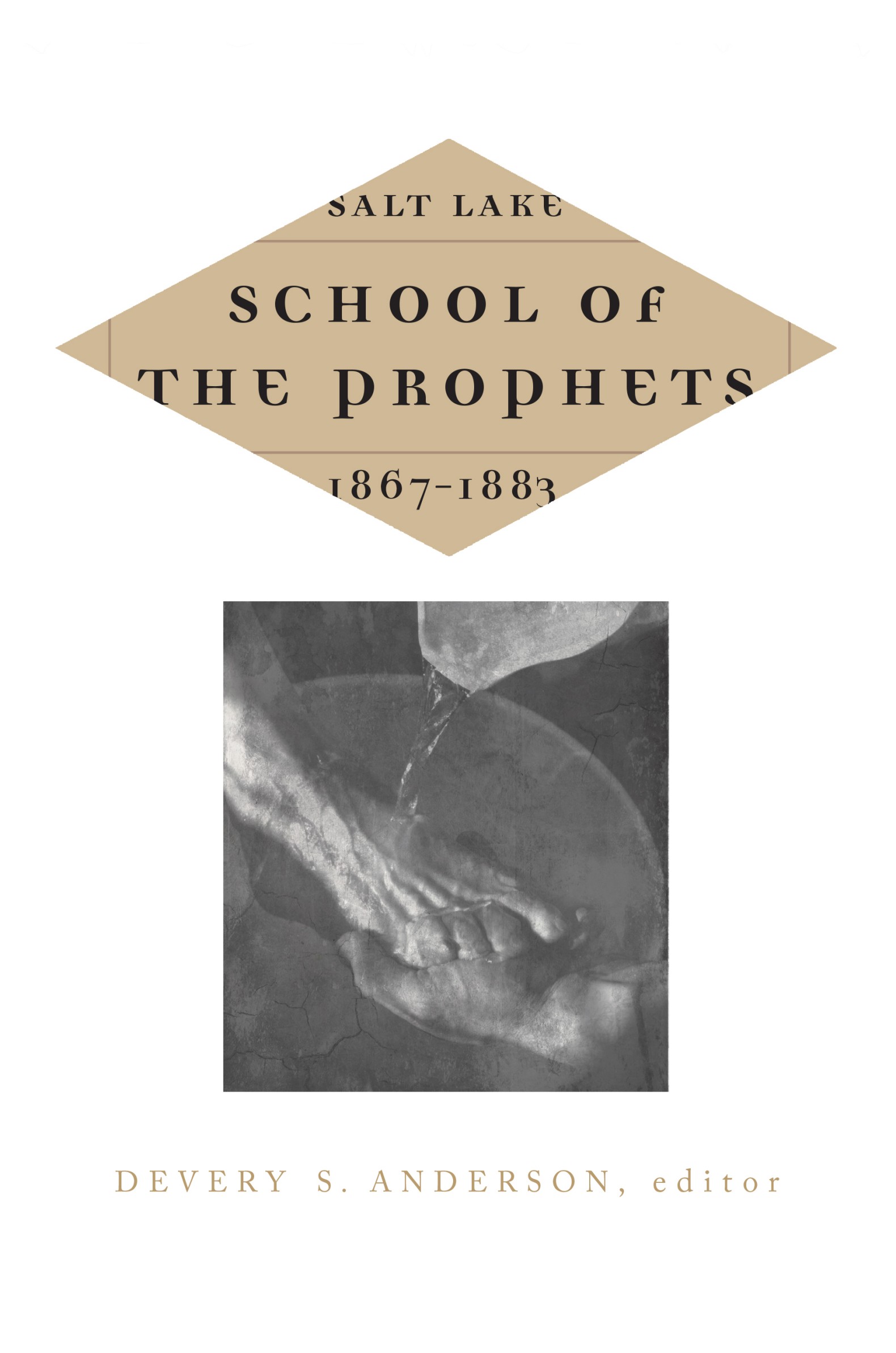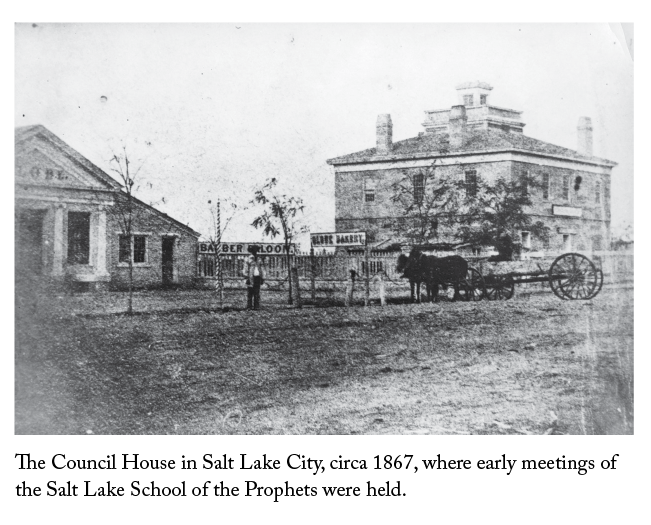S a l t Lake
School o f
the Prophets
-1
Devery S. Anderson, editor
Signature Books | 2018 | Salt Lake City
To my older brothers, James Anthony Anderson
and Stephen William Anderson
Jacket design by Ron Stucki
2018 Signature Books . All rights reserved .
Signature Books is a registered trademark of Signature Books Publishing , LLC . Printed in the USA on paper certified by the Sustainable Forestry Initiative .
www . signaturebooks . com
first edition | 2018
library of congress cataloging - in - publication data
Control number: 2018022685
Contents
Editors Introduction
Although age and mounting anti-polygamy raids had tamed Brigham Young to a degree, he could still be fierce, even in his seventies. The source of his animus in 1872 was declining attendance at the all-male School of the Prophets, which he had founded five years earlier. Nor was he happy that information about the schools otherwise secret proceedings was leaking to the outside world. He had had enough and decided to dissolve the school and reorganize it, each member having to reapply for membership and demonstrate his worthiness to attend. It was typical of the way Young had run the school for five years, adapting to circumstances rather than being confined by precedent.
All three iterations of the School of the Prophets, under the direction of three different church presidentsJoseph Smith, Young, and John Taylorwere reflections of the personalities and beliefs of the leaders who stood at their head. The original school organized by Smith in Kirtland, Ohio, was formed because of a revelation. The overall purpose of the school was the education of new missionaries preparing to enter the mission field. Some of the ceremonies introduced to the school were later seen as foreshadowing the Nauvoo temple endowment, and there was an emphasis on spiritual as well as secular instruction. By contrast, Youngs Salt Lake school was more pragmatic in how it attempted to oversee local politics and economics, and in how members discussed, debated, and resolved theological questions. It was not unusual for the school to consider crop rotations or the differences between gold ore and quartz gold. In 1883, Taylors effort to revive the school began much like Smiths school, with a revelation, leading to a review of the records to ensure the new school adhere to divine precedent, even if the revelation had not always been carefully followed in the past. Under Smith, a separate branch of the school was established in Missouri; under Young and Taylor, branches were established throughout Utah Territory.
Joseph Smiths Schools, 183337
The idea for the Schools of the Prophets predated Joseph Smith. Harvard and Yale were initially seminaries where clergymen were trained, and they were sometimes referred to as schools of the prophets, drawing on the Bible (1 Sam. 19:1824). By the time the First Great Awakening occurred in the 1740s, suspicions regarding secularism in elite educational institutions prompted the founding of rival schools, which retained the term prophet in referring to teachers of religion. All of these schools functioned as seminaries at first and built up the secular structures around the divinity-school core as time went on.
So too was Smiths School of the Prophets meant to prepare men for the ministry. The schools directive appeared in two revelations, the first received during a conference of priesthood holders in Kirtland, Ohio, on December 2728, 1832, the second on January 3, 1833; together the two revelations now form Section 88 of LDS editions of the Doctrine and Covenants. The December revelation commanded the men to teach one another the doctrine of the kingdom. If they did so correctly, with Gods grace attending them, they would be instructed more perfectly in theory, in principle, in doctrine, in the law of the gospel, in all things that pertain unto the Kingdom of God, that are expedient for you to understand. This knowledge would extend beyond theology to teach things both in heaven and in the earth, although temporal knowledge would be conveyed through a religious lens. They were also told to build a house and see to it that it became a house of prayer, a house of fasting, a house of faith, a house of learning, a house of glory, a house of order, a house of God (vv. 7779, 119). The earliest interpretation of this house of God was a schoolhouse to train lay missionaries and ministers; references to the building as a temple would come later.
The second part of section 88, the portion dictated six days later in January 1833, elaborated on the school of the prophets, established for their instruction in all things that are expedient for them, even for all the officers of the church, or in other words, those who are called to the ministry in the church. Those received into the school needed to be clean from sin and were to be initiated through the ordinance of washing of feet to be administered by the president or presiding elder of the church (vv. 127, 13840).
Smith shortly thereafter sent a letter to William W. Phelps in Independence, Missouri, where the church was attempting to erect a model society. Smith enclosed the December revelation, which he called the Olieve leaf which we have plucked from the tree of Paradise, the Lords message of peace to us. He may have included the January revelation, which he also referenced by pointing out to Phelps that the Lord commanded us in Kirtland to build an house of God, & establish a school for the prophets, this is the word of the Lord to us, & we mustyea the Lord helping us we will obey, as on conditions of our obedience, he has promised great things.
Smith hoped the school would unite the priesthood, because the church organization was beginning to show fractures. During another conference of high priests, this one on January 13, he assigned his brother Hyrum and Orson Pratt to chastise the Missouri leaders for criticizing the church and to inform them that the School of the Prophets will commence if the Lord will in 2 or 3 days.
The next day Smith introduced the washing of feet, as performed by Jesus for his disciples (John 13). The gesture had been picked up by prelates in the earliest Christian centuries and was still being practiced here and there in the 1830s, although generally as a sign of humility rather than purification and cleansing. It was criticized in the sixteenth century by Martin Luther, who saw in it a contrived servility, whereas Mennonites thought it was an important sacrament from primitive Christianity. The Pittsburgh Baptist Church under Walter Scott, with which Sidney Rigdon had associated as a minister, performed feet washing as a gesture of brotherly love and hospitality. After Smith had ritually washed everyones feet, he told them to do the same, and he pronounced them all clean from the blood of this generation.
After the inauguration of the school, twenty-five members met regularly through the winter and spring until April 1, 1833, with plans to reconvene in the fall. Orson Hyde had served as instructor, Smith as principal or presiding officer, and school members had followed a specific academic curriculum, although occasionally the classes were interrupted by revelations and visions. For instance, fifty years later, Zebedee Coltrin asserted that he and other men had seen Jesus walk through the room in plain clothing, as well as God in a vision that was so intense he thought the fire might consume them. Although no specific message was delivered at the time, Smith told the men that having seen the Father and the Son meant they were now qualified to be called apostles.


